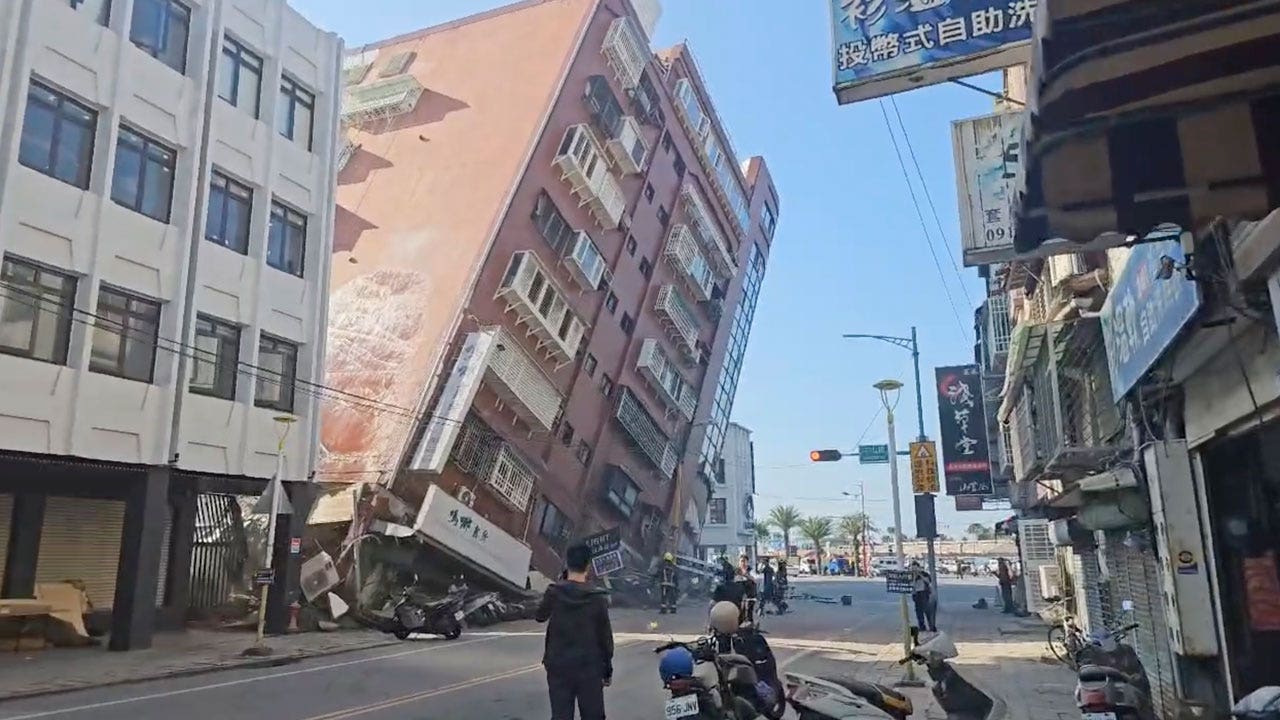
Taiwan was struck Wednesday by its most powerful earthquake in a quarter of a century. At least nine people were killed and hundreds injured, buildings and highways damaged and train service interrupted.
Taiwan is no stranger to powerful earthquakes, yet their toll on the high-tech island’s 23 million residents has been relatively contained thanks to its excellent earthquake preparedness, experts say.
Here is a closer look at Taiwan’s history of earthquakes:
VIDEO SHOWS CHANDELIER WAVING DURING TAIWAN QUAKE
Why so many temblors?
Taiwan lies along the Pacific “Ring of Fire,” the line of seismic faults encircling the Pacific Ocean where most of the world’s earthquakes occur.
The area is particularly vulnerable to temblors due to the tension accumulated from the interactions of two tectonic plates, the Philippine Sea Plate and the Eurasian Plate, which may lead to sudden releases in the form of earthquakes.
The region’s mountainous landscape can magnify the ground shaking, leading to landslides. Several such landslides occurred on Taiwan’s eastern coast near the epicenter of Wednesday’s quake near eastern Hualien County, when falling debris hit tunnels and highways, crushing vehicles and causing several deaths.

A partially collapsed building is seen in Hualien, Taiwan, on April 3, 2024. A powerful earthquake rocked the entire island, collapsing buildings in a southern city and creating a tsunami that hit southern Japanese islands. (TVBS via AP)
How well-equipped is Taiwan to handle quakes?
Wednesday’s earthquake measured 7.2, according to Taiwan’s earthquake monitoring agency, while he U.S. Geological Survey put it at 7.4. It damaged several buildings in Hualien but caused only minor losses in the capital Taipei despite being strongly felt there.
The earthquake hit in the middle of the morning rush hour yet only slightly derailed the regular commute. Just minutes later, parents were again walking their children to school and workers driving to offices.
“Taiwan’s earthquake preparedness is among the most advanced in the world,” said Stephen Gao, a seismologist and professor at Missouri University of Science and Technology. “The island has implemented strict building codes, a world-class seismological network, and widespread public education campaigns on earthquake safety.”
The government continually revises the level of quake resistance required of new and existing buildings — which may increase construction costs — and offers subsidies to residents willing to check their buildings’ quake resistance.
Following a 2016 quake in Tainan, on the island’s southwestern coast, five people involved in the construction of a 17-story high-rise apartment building that was the only major structure to have collapsed, killing dozens, were found guilty of negligence and given prison sentences.
Taiwan also is pushing quake drills at schools and workplaces while public media and cellphones regularly carry notices about earthquakes and safety.
“These measures have significantly enhanced Taiwan’s resilience to earthquakes, helping to mitigate the potential for catastrophic damage and loss of life,” Gao said.
Living with earthquakes
Taiwan and its surrounding waters have registered about 2,000 earthquakes with a magnitude of 4.0 or greater since 1980, and more than 100 earthquakes with a magnitude above 5.5, according to the USGS.
CLICK HERE TO GET THE FOX NEWS APP
The island’s worst quake in recent years struck on Sept. 21, 1999, with a magnitude of 7.7. It caused 2,400 deaths, injured around 100,000 and destroyed thousands of buildings.
The last deadly quake to strike Hualien County occurred in 2018, collapsing a historic hotel and other buildings.
“This high level of seismic activity will unfortunately continue for millions of years to come,” said Gao. “This underscores the importance of preparedness and resilience in the face of ongoing seismic risks.”






